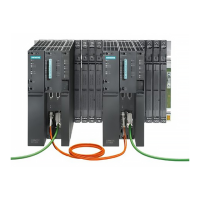
Do you have a question about the Siemens Simatic M7-400 and is the answer not in the manual?
| Series | Simatic M7-400 |
|---|---|
| Processor | Varies depending on CPU model (e.g., Intel 80486, Pentium) |
| Supply voltage | 24 V DC |
| Digital inputs | Varies depending on I/O module |
| Digital outputs | Varies depending on I/O module |
| Analog inputs | Varies depending on I/O module |
| Analog outputs | Varies depending on I/O module |
| Communication | PROFIBUS, PROFINET |
| Communication Ports | MPI, PROFIBUS |
| Operating Temperature | 0°C to 60°C |
Details standards and approvals met by the modules, including CE and UL marks.
Information on noise immunity and radio interference suppression requirements and guidelines.
Guidelines for transporting and storing modules and backup batteries in original packaging.
Specifies operating conditions for mechanical requirements (Class 3M3) and ambient conditions (Class 3K3).
Information on installing and operating the S7-400 in hazardous areas requiring specific precautions.
Explains the manual's scope and content for S7-400 programmable controllers.
Outlines necessary automation and STEP 7 software knowledge for understanding the manual.
Identifies intended readers for commissioning, operation, and maintenance of described products.
States the manual's validity for the S7-400 and M7-400 programmable controller.
Details the tasks and structural elements of S7-400 racks, including mounting rails and backplane bus.
Describes UR1 (18-slot) and UR2 (9-slot) racks used for central and expansion assemblies.
Details the UR2-H rack, representing two isolated UR2 racks for redundant S7-400H systems.
Describes the CR2 rack for segmented central racks with a split I/O bus.
Details the CR3 rack for standard systems, not fault-tolerant, with I/O and communication buses.
Describes ER1 and ER2 expansion racks with restrictions on interrupts, 24V supply, and backup.
Outlines common characteristics like design, cooling, connections, and LEDs.
Explains using two modules for redundant power supply to increase availability, especially on unreliable systems.
Details the function and specifications of backup batteries for retaining parameters and memory during power failure.
Explains operator controls and indicators on the power supply module front plate, including LEDs and switches.
Describes fault indications via INTF, 5 VDC, 24 VDC, BAF, BATTF LEDs and their remedies.
Summarizes key characteristics of digital input and output modules in tables for easy selection.
Outlines tasks for successfully commissioning digital modules, from selection to diagnosis.
Explains static and dynamic parameter assignment in STEP 7 STOP mode and via SFCs.
Distinguishes programmable/non-programmable messages and explains actions following diagnostic messages.
Describes interrupt behavior, enabling interrupts, and special features for ER-1/ER-2 use.
Explains the input current requirements per IEC 61131 standard and BERO compatibility.
Details shared characteristics, tasks, configuration rules, and connection properties of interface modules.
Describes operator controls and indicators for IM 460-0 and IM 461-0, including DIP switches and LEDs.
Details operator controls and indicators for IM 460-1 and IM 461-1, including LEDs and connectors.
Describes operator controls and indicators for IM 460-3 and IM 461-3, including parameterization and DIP switches.
Details operator controls and indicators for IM 460-4 and IM 461-4, including parameterization and DIP switches.
Explains using the IM 463-2 for connecting S5 expansion units to S7-400, covering area of application and basic requirements.
Covers cable length, expansion limits, terminating connectors, and permissible potential differences for S5 units.
Describes LEDs, interface selector switch, and cable length selector switch on the IM 463-2 front plate.
Outlines steps for installing the IM 463-2 in a CR and preparing the connecting cable.
Details setting S5 expansion unit usage and I/O address areas on the IM 314 for the IM 463-2.
Introduces PROFIBUS DP master interface for field communication between controllers and devices.
Explains configuration via STEP 7 and module replacement without a programming device.
Describes LEDs and mode selector on IM 467/467 FO for operating modes and fault indications.
Details electrical and optical connection methods and maximum cable lengths for PROFIBUS DP.
Explains how to monitor fans using LEDs, relays, and speed monitoring for fault detection.
Describes the function and technical specifications of the cable duct for cable management.
Details operator controls, indicators, fuse, and technical specifications for the 120/230 VAC fan.
Describes construction, characteristics, installation, wiring, and fuse for the 24 VDC fan.
Explains the purpose of RS 485 repeaters for signal amplification and bus segment interconnection.
Shows the repeater's appearance and lists its functions, including terminals and switches.
Details grounded and ungrounded operation modes, including jumper settings and grounding notes.
Provides detailed technical specifications, pin assignments, and block diagrams for the RS 485 repeater.
Compares key performance features of CPU 486-3 and CPU 488-3, including memory and expansion capabilities.
Lists technical specifications like nominal voltage, current consumption, power losses, and dimensions for M7-400 CPUs.
Familiarizes users with individual elements like LEDs, mode selector, memory card receptacle, and interfaces.
Guides users through configuring CPUs via BIOS setup for expansions, boot options, and system settings.
Details I/O address space, main memory assignment, and interrupt assignments for M7-400 CPUs.
Introduces interface submodules, their operation, handling, ESD guidelines, and addressing.
Provides submodule IDs and rules for insertion into various receptacles like EXM, CPU, FM.
Describes connecting keyboard and VGA screen via the IF 962-VGA submodule, noting distance limitations.
Details connecting serial devices using the IF 962-COM submodule's two ports (COMa, COMb) and addressing.
Explains the IF 962-LPT submodule's parallel port for printer and bi-directional data interface use.
Details characteristics of the IF 961-DIO for 8 digital inputs and 8 outputs, including interrupt and diagnostic capabilities.
Describes the IF 961-AIO for 4 analog inputs and 2 analog outputs, covering measuring ranges and wiring.
Details the IF 961-CT1 submodule for connecting incremental encoders, including counting tasks and gate functions.
Introduces the IF 964-DP for distributed I/O via PROFIBUS DP with isolated RS485 interface and cable length specifications.
Explains assigning parameters using STEP 7 or M7 API software via SFCs, and how parameters are stored.
Lists settable parameters for digital input modules, including diagnostics, interrupts, and substitute values.
Lists settable parameters for digital output modules, covering diagnostics and reaction to CPU-STOP.
Details parameters for analog input modules, including measuring types, ranges, and temperature coefficients.
Explains how diagnostic data is structured in data records 0 and 1 for STEP 7 analysis and further reading.
Describes diagnostic data structure for bytes 0 and 1, including module type codes.
Details diagnostic data structure for SM 421; DI 16 x 24 VDC, covering operating status and errors in bytes 2 and 3.
Outlines diagnostic data structure for SM 422 digital output modules, covering operating status and errors in bytes 2 and 3.
Details diagnostic data structure for SM 431 analog input modules, covering operating status and errors in bytes 2 and 3.
Lists order numbers for spare parts like racks, power supplies, CPUs, memory modules, and interface modules.
Defines ESD, explains sensitivity to overvoltages, and shows the ESD warning symbol.
Illustrates maximum electrostatic voltages build-up on persons based on materials and humidity, per IEC 61000-4-2.
Provides measures for grounding personnel, surfaces, and packaging, and avoiding direct contact with ESD devices.
Defines address as a specific operand or address area, giving examples like input I 12.1.
Defines aggregate current as the sum of currents from all output channels on a digital output module.
Explains the backplane bus as a serial data bus for module communication and voltage supply, using bus connectors for interconnection.
Ensures user program and data are stored powerfail-proof in the CPU, retaining memory markers, timers, and counters.
Describes using external backup voltage for CPU/EU to maintain data during power supply replacement.
Defines bus as a transmission medium interconnecting nodes for serial or parallel data transfer over conductors or fiber-optic cables.
Physical connection between bus nodes and the bus cable.
Self-contained section of a serial bus system, interconnected by repeaters.
An S7-400's central controller (CC) housing the CPU and allocatable expansion units.
CPU (Central Processing Unit).
Restarts the controller and user program after dynamic data reset, manually or automatically.
Voltage common to all inputs/outputs of a group, measured against a reference point or ground.
Load on CPU scanning from communication operations; max. permissible load can be set via parameter assignment.
Module for communication tasks like networking and point-to-point connection.
Parameter for analog input modules to determine reference junction for thermocouple measurements.
Compensation circuit for temperature fluctuations at the reference junction for thermocouples.
Selects and integrates components and software for specific use, adapting parameters.
Communication processor.
Central Processing Unit of the programmable controller.
Data areas in user program containing user data, accessible by code blocks or assigned to specific FB calls.
Static data used only within a function block, saved in instance data blocks.
Local data of a block stored in L stack, not available after execution.
Assigning variables with name, data type, comment, etc.
Sensible basic setting used when no other value is provided.
Parameter to select CPU for hardware and diagnostic interrupts.
CPU memory area storing diagnostic events in order of occurrence, accessible via STEP 7.
All diagnostic events collected in CPU, entered into diagnostic buffer, triggering OBs.
Reports system errors to CPU via interrupts, triggering OB 82 for processing.
Generic term for system, process, and user-defined diagnostics.
Direct access of CPU via I/O bus to modules, bypassing the process image.
Assigning local I/O areas of DP slave/master to PROFIBUS DP partner for data exchange.
Node with master function in PROFIBUS DP, executing user data communication with assigned DP slaves.
Slave operated on PROFIBUS bus using PROFIBUS DP protocol, responding to master requests.
Signal status change from 1 to 0.
Signal status change from 0 to 1.
Electrically erasable programmable read-only memory.
Erasable programmable read-only memory.
DP bus cycle accurate to few µs, configurable in STEP 7 for synchronous operation.

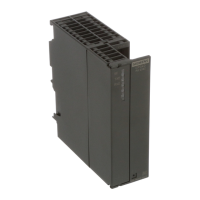
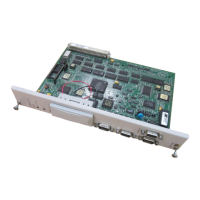

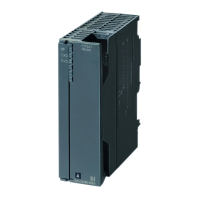
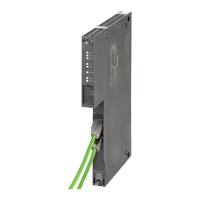
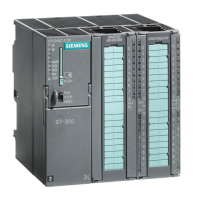

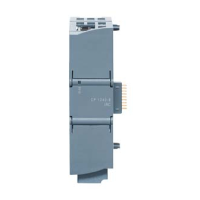
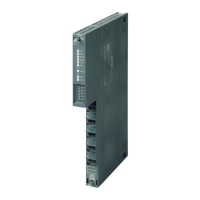
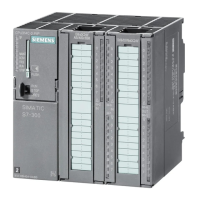

